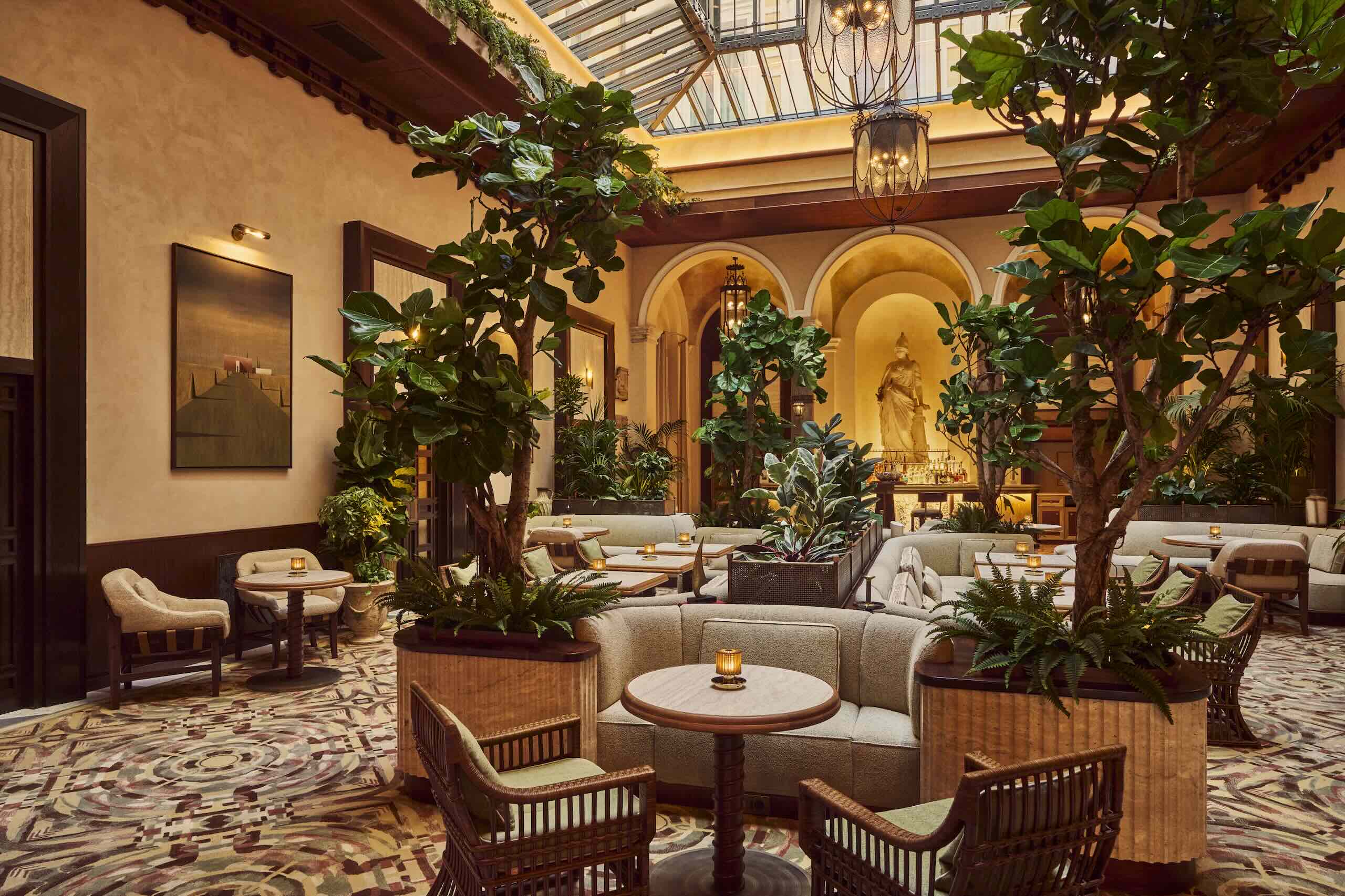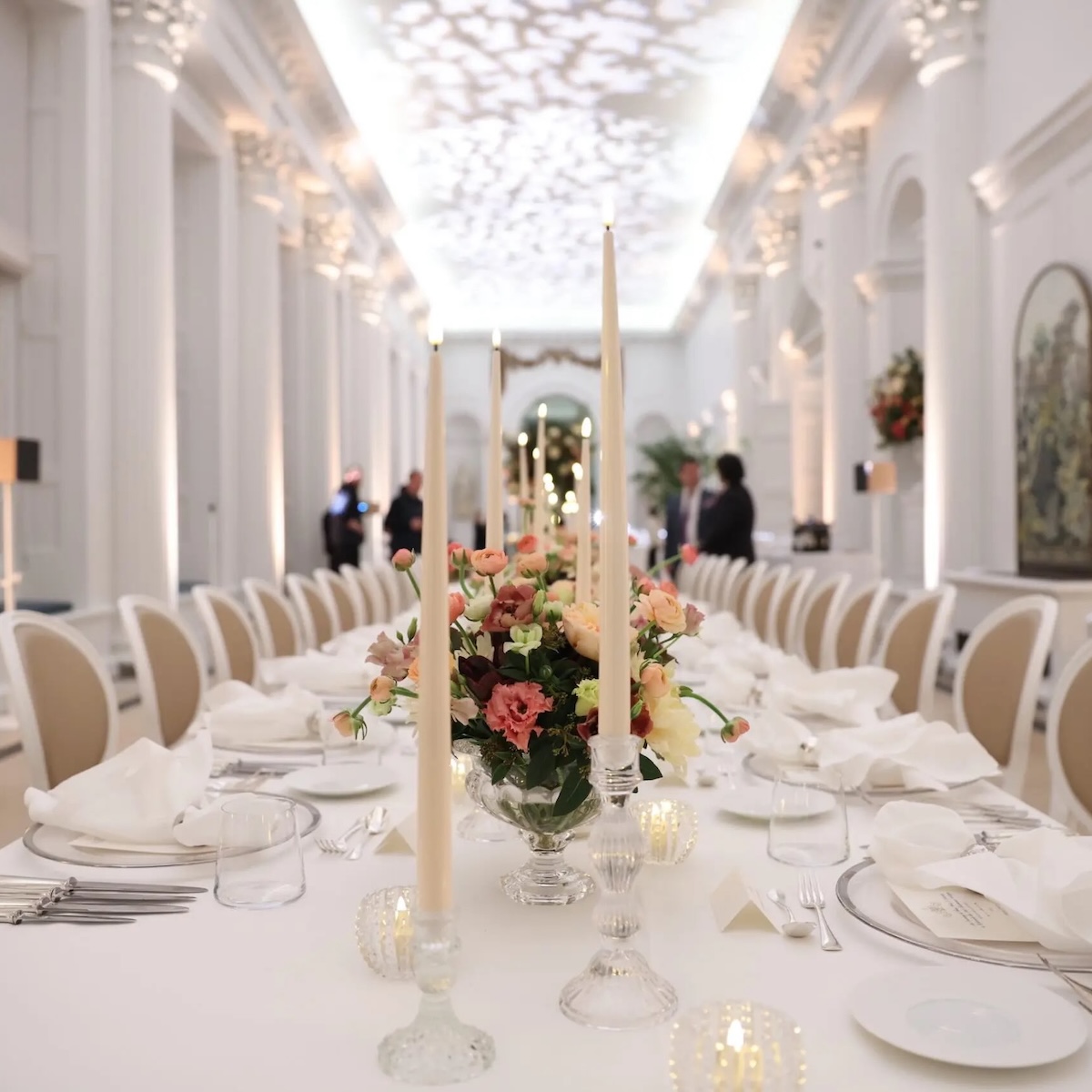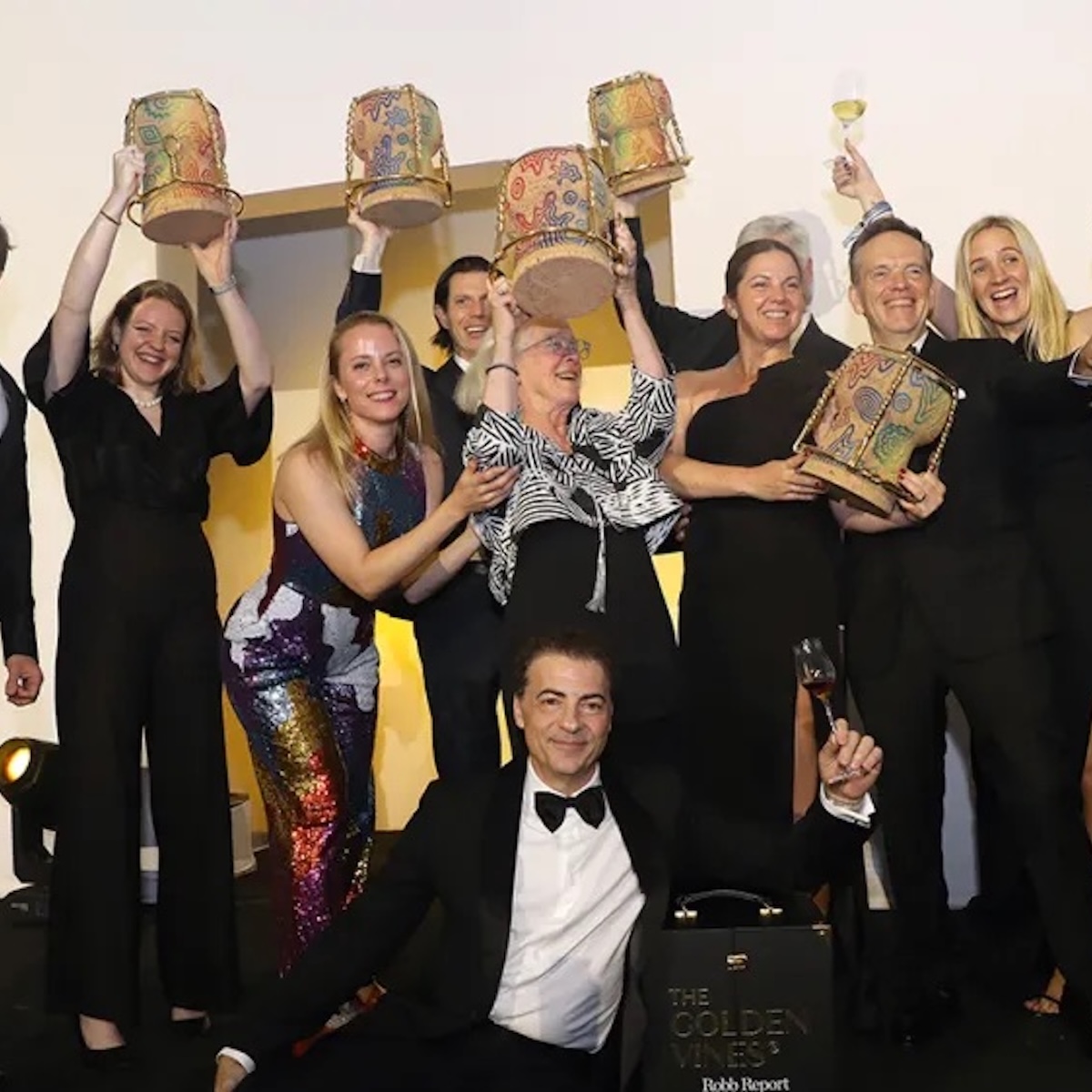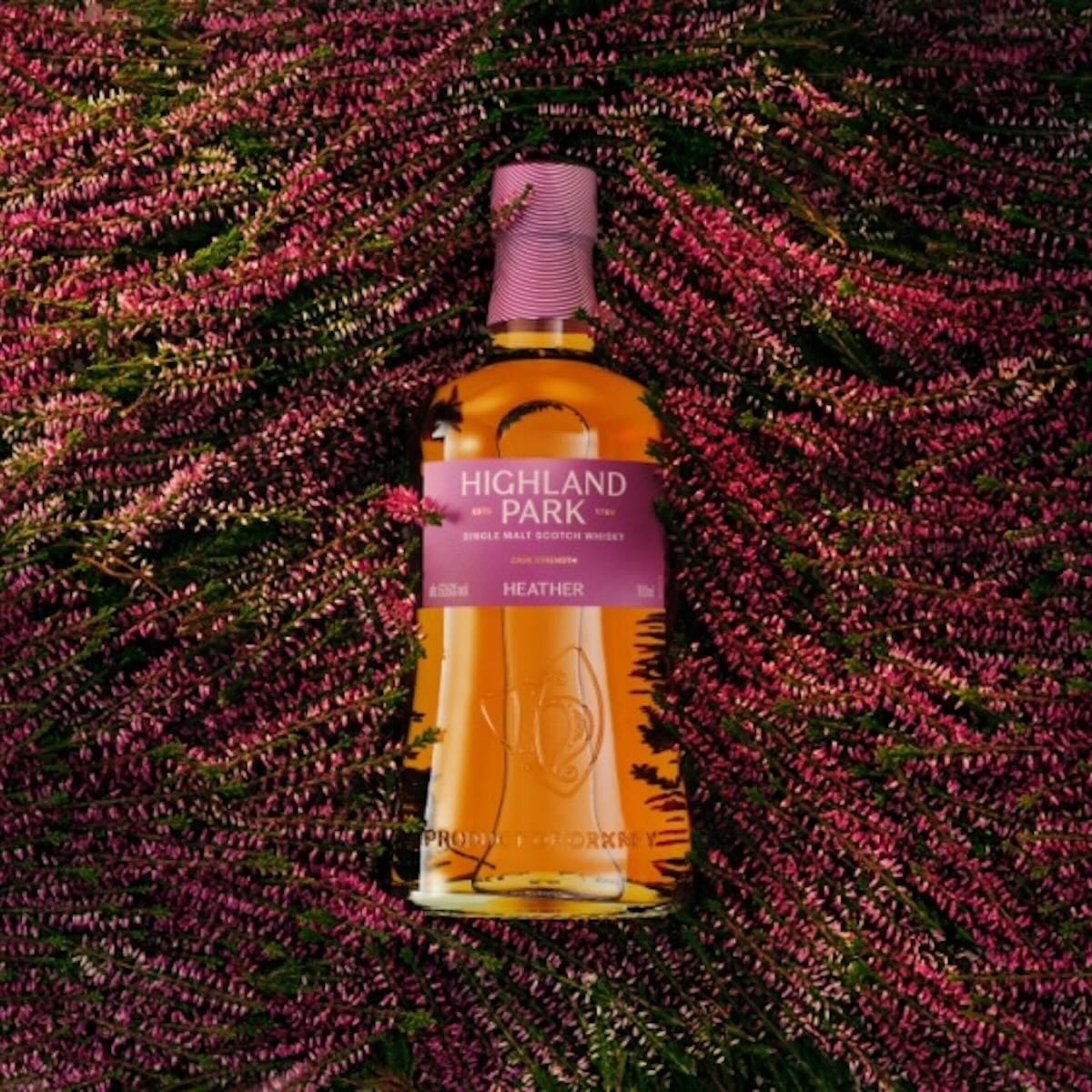Orient Express has shown that an amazing dream can become reality in a very short space. Within a few weeks, not only has Accor’s Orient Express, the hotel company, opened its first glorious product in Rome—Orient Express La Minerva—but, more or less simultaneously, its train launched superbly, and La Dolce Vita Orient Express is set to change rail travel perception forever.
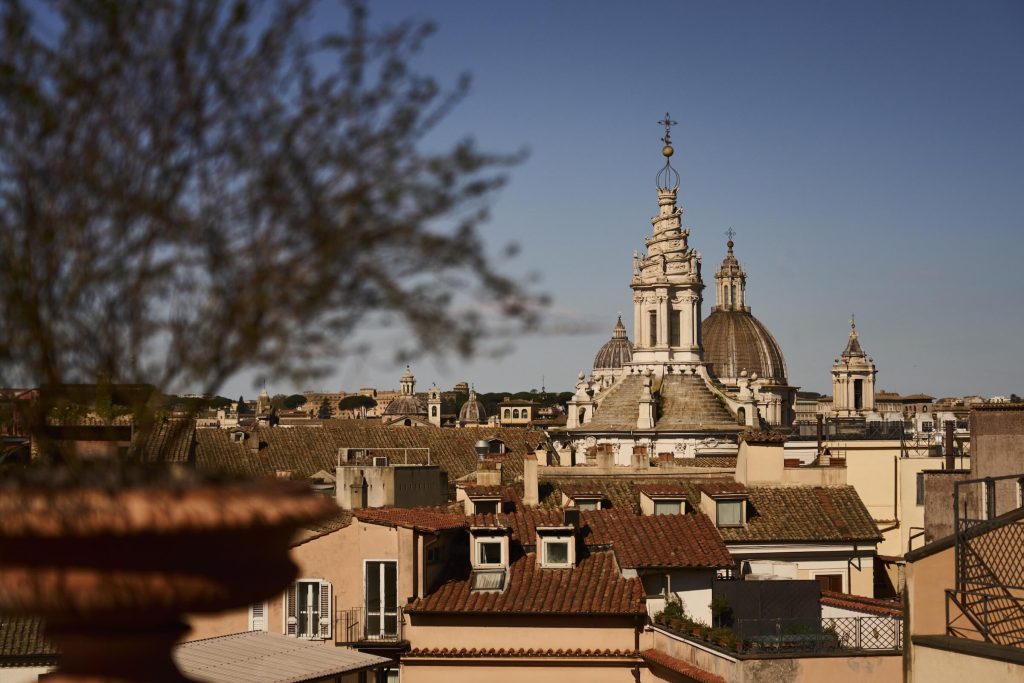
At least by the end of 2025, there will, in fact, be two hotels, with a 44-room Venice beauty opening on a so-far-unconfirmed date. All three—two hotels and the train—are owned by Arsenale, a family company of Paolo Barletta’s, who’s put together an advisory board that includes a leading Bulgari family member, and Australia’s most famous female politician. Barletta’s synonymous with the best.
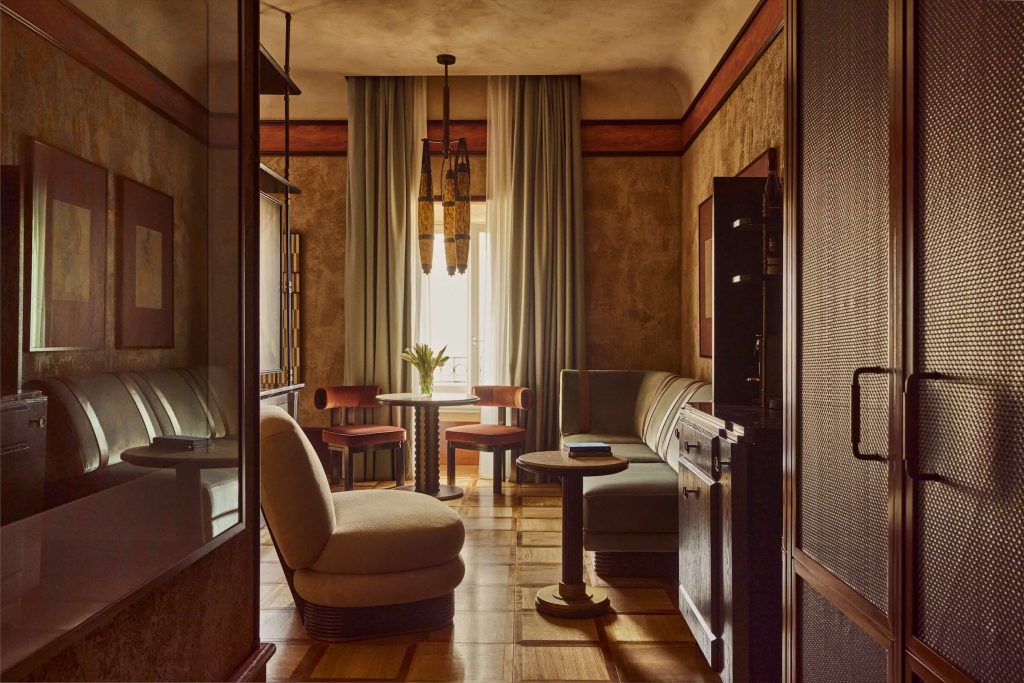
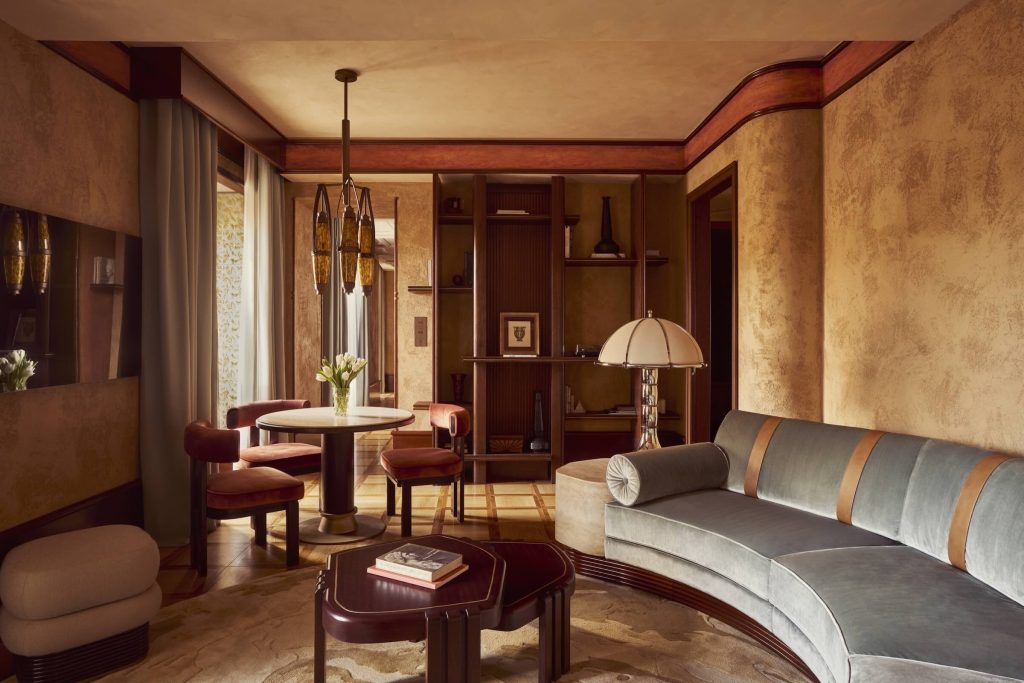
Rome’s 93-key Orient Express La Minerva is a conversion of a nine-floor palace built in 1620 for the Fonseca family—top class in Iberian lineage. Now in a soft peach hue, the building faces the Pantheon, just a mere hundred yards away over horribly uneven grey cobblestone that remains a feature of central Rome. Inside, the palace is a treasure of historic and international design, with more than a hint of rail travel. Mexican-Parisian designer Hugo Toro, has, for instance, put luggage racks—similar to the ones found in old trains—in the bedroom wardrobes.

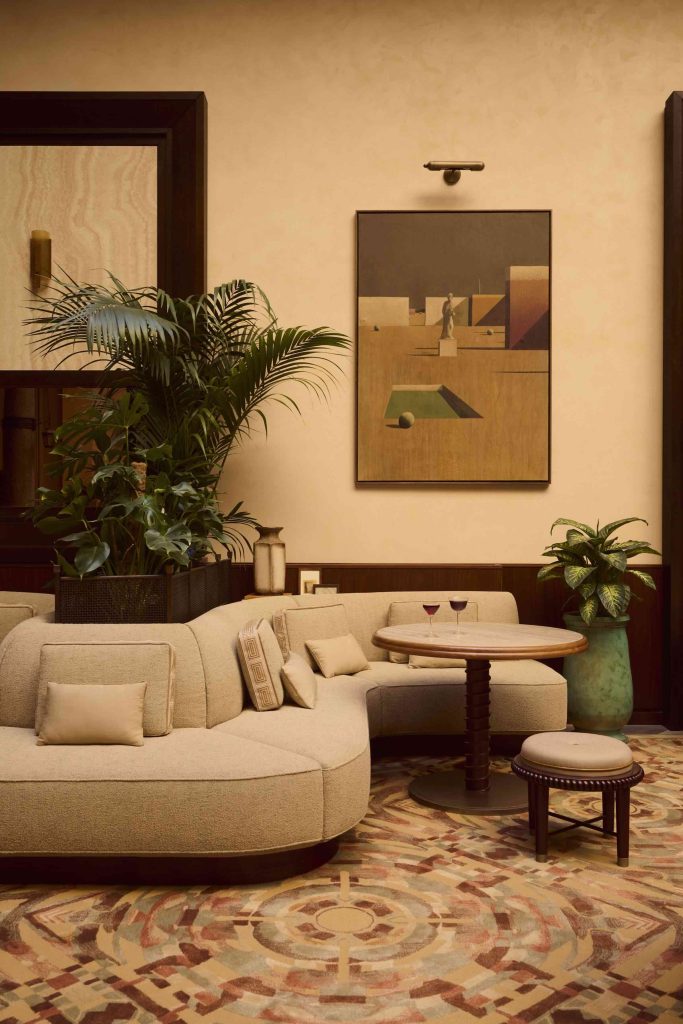
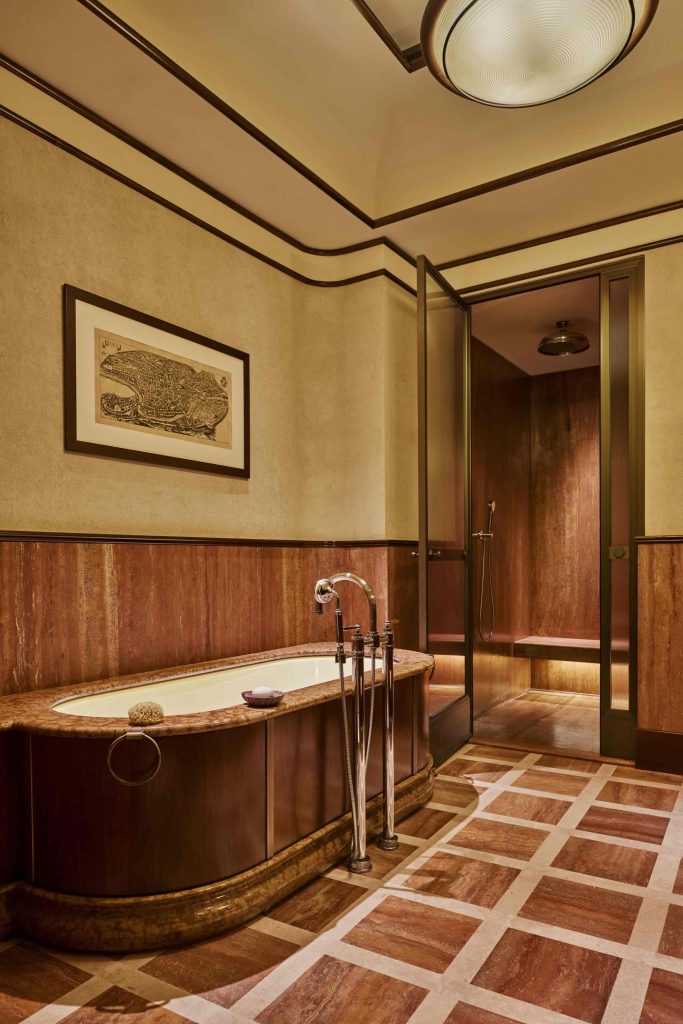
Suite 601—at one end of the building—looks over the Piazza della Minerva to the Pantheon. It’s a treasure trove of highly lacquered wood, rich fabrics, and drawers lined in soft leather. One bathroom drawer contains such delectables as a mid-tan drawstring satin bag that holds a matching mid-tan satin shower cap, lined with a waterproof material (not so much a shower cap as a work of art yearning to be part of a Rembrandt costume at a fancy dress party). In fact, the whole suite is full of superb, unique qualities, like a curved green velvet sofa, going through about 230 degrees from lacquered wood at one end to stone at the other end. At the stone end, there’s an inset socket, and a USB socket, and atop the whole, there’s a glorified standing lamp based on rail-carriage lighting of yore.
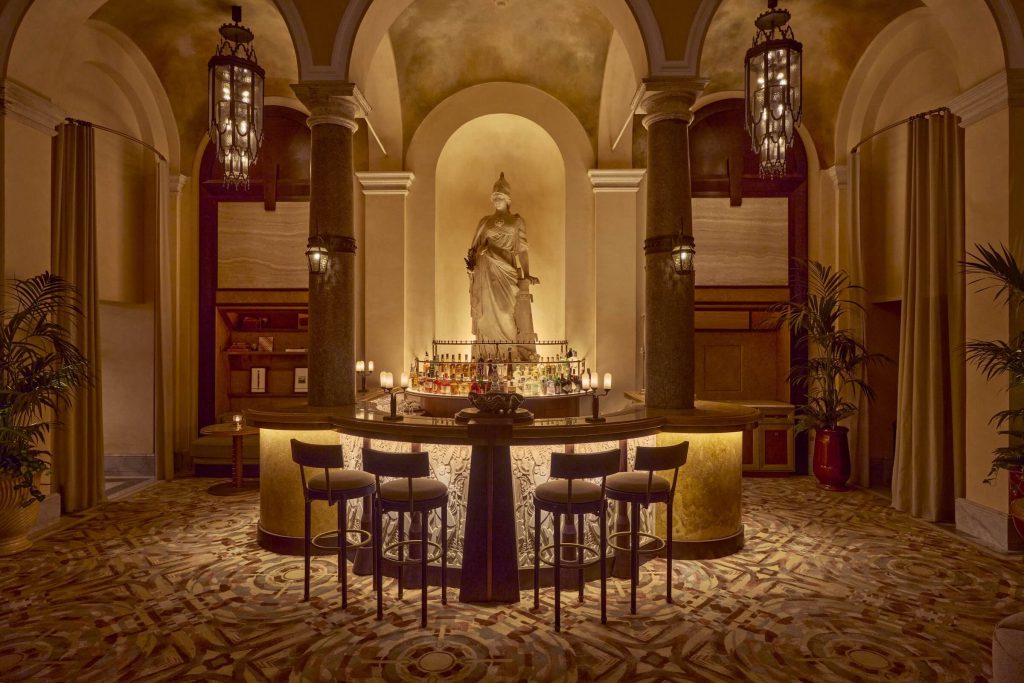
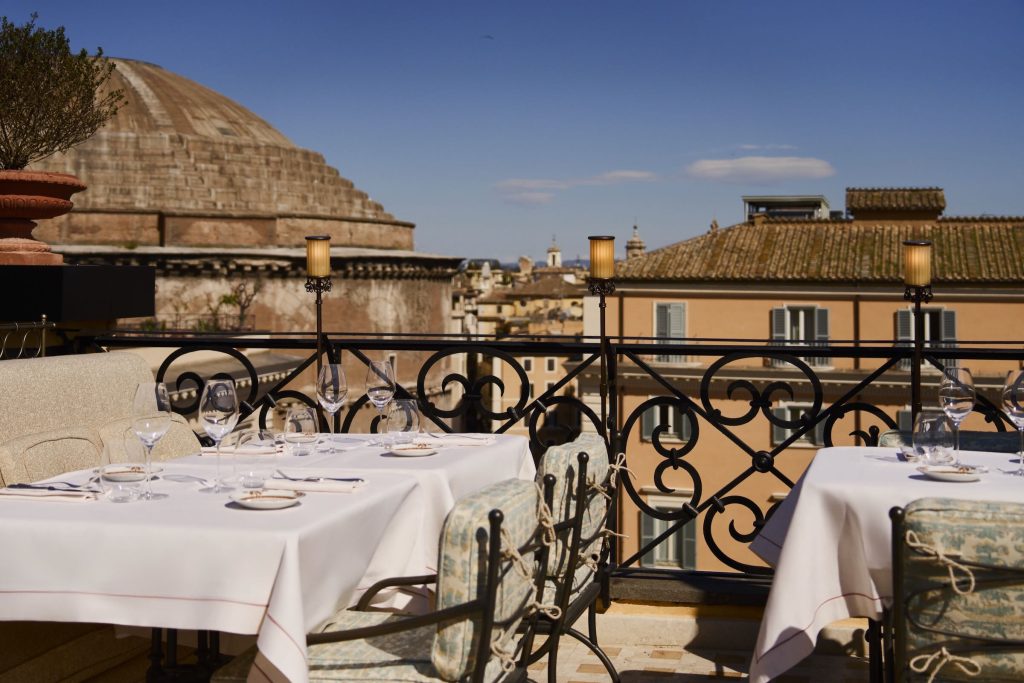
Public areas have more than a hint of Rousseau, an abundance of modern greenery, and a slight hint of the Orient Express train. As in bedrooms, the main lobby lounge, and adjacent withdrawing areas, have three-paddle wooden ceiling fans—Hugo Toro and nostalgic minutiae are natural bedfellows. Barletta would have met Toro when he was designing Gigi restaurants in Paris and Saint-Tropez. Now, the rooftop restaurant, here in Rome, is also a Gigi, run by the hotel but conceptualised by Rikas, an Ennismore partner, named for its founding CEO, Paris-born Rizwan Kassim. Gigi is Italian comfort, say burrata with chicory, or divine crispy calamari with anchovies and lemon sauce. Share a veal Milanese on a big wooden platter, with arugula, Parmesan, sun-dried tomato, and serious Gigi knives.
What else? Orient Express La Minerva has an inbuilt chapel for spur-of-the-moment, non-Vegas nuptials; there’s a 24-hour fitness centre stacked with Technogym equipment; and opening any day now is a Furtuna spa, run by former Hermès model and certified olive oil sommelier Agatha Relota Luczo and her husband Steve, who farm organically on Sicily. (Her Furtuna Skin products are used by such mega-names as Hailey Bieber and Kourtney Kardashian.)
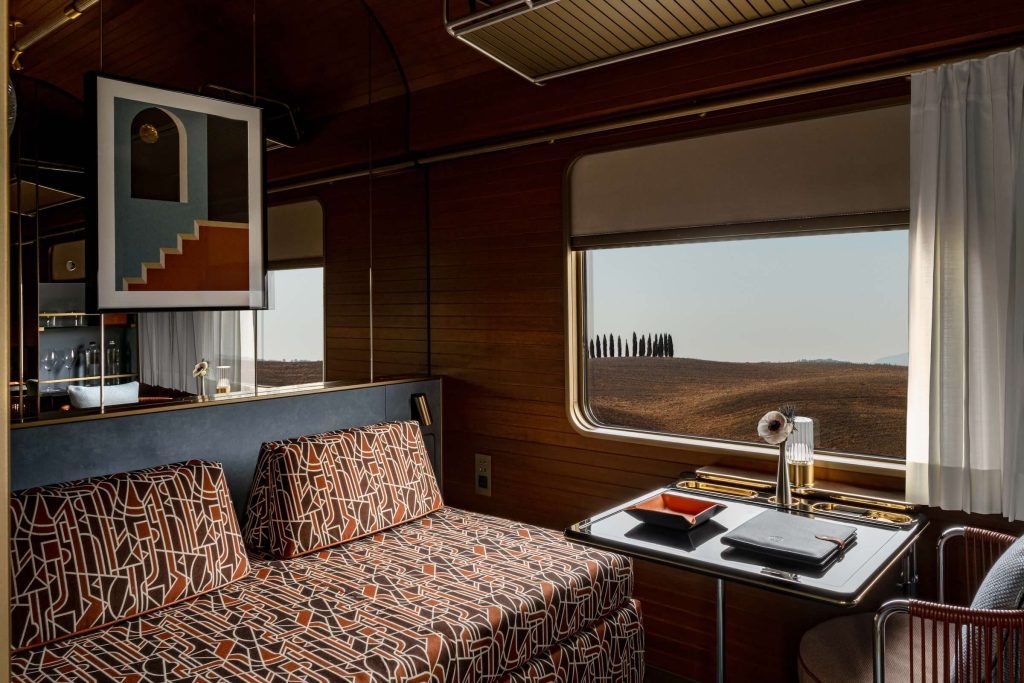
And now, for the train, which, again, is testimony to Barletta’s luxury style—the glasses, for example, are Riedel. Well-orchestrated throughout by another luxurist, GM Marco Girotto, the experience-on-wheels includes limousine pick-up from the appropriate airport or wherever, and at the Brutalist masterpiece that is Roma Ostiense railway station, there’s a full bar with live music in the dedicated Dolce Vita lounge, another Hugo Toro masterpiece. Meanwhile, the train itself consists of 12 carriages, over half a century old and meticulously restored. Carriage interiors are done by two Italian guys working as Dimore Studio—they are masters of colour and shape and also of illusion (the bedrooms and en-suite bathrooms seem larger than reality).
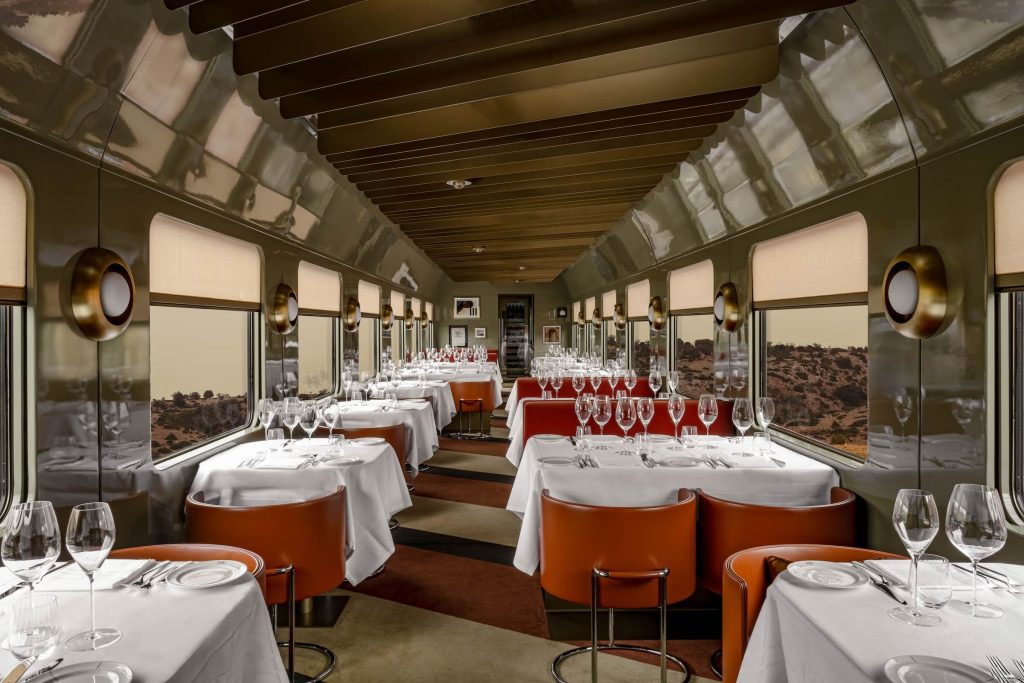
Heinz Beck, star of three-Michelin-star La Pergola in Rome and the Palazzo Fiuggi health resort, designs the onboard menu, and the six-course dinner on the first night included squid salad, turbot with liquorice and fennel, and orange jelly with bergamot ice cream, paired variously with Ferrari Perlé Bianco, Joaquin Fiano di Avellino, and Le Difese Chianti Metodo Classico wines, and Torcolato with dessert. Afterwards, postprandial networking in the bar, the magnet of the carriages, became the undisputed order of the day, or at least far into the night.
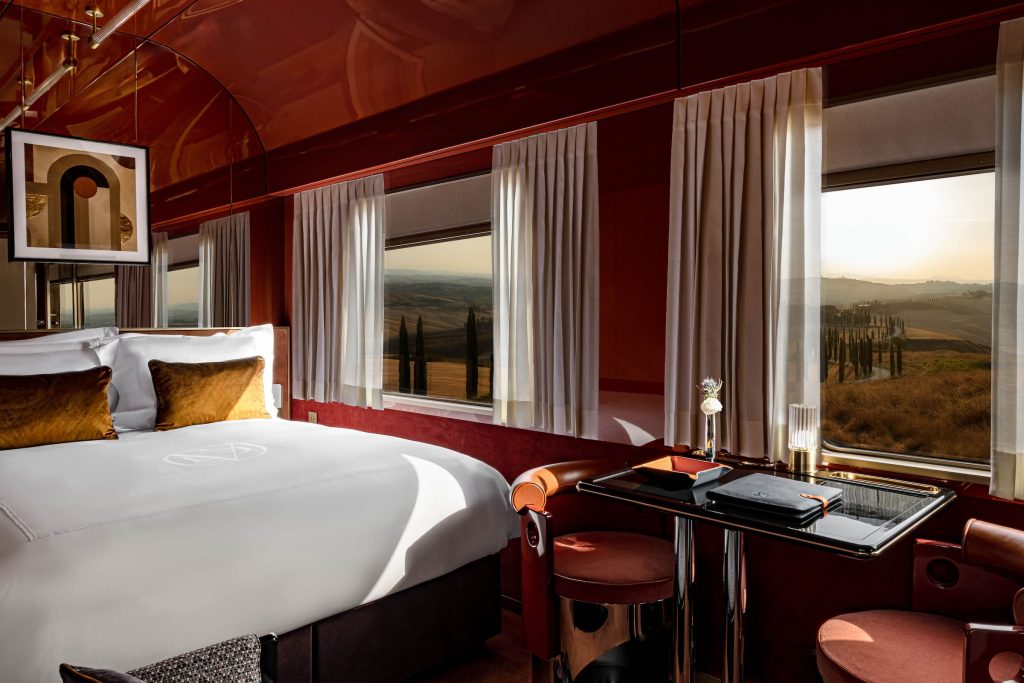
As with any house party that works, a possibly haphazard group of travellers evolves to become friends ready to tour an Antinori winery tomorrow afternoon. Off-train excursions are yet another included element of the extraordinary La Dolce Vita Orient Express train—a dream that’s now reality.
All images courtesy of Alexandre Tabaste/Orient Express.





